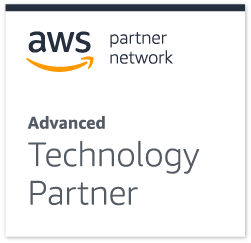ECS vs Fargate vs EKS: The Lowdown on Containers in AWS
Posted on

Amazon offers multiple solutions for running containers in AWS, through its managed Elastic Container Service (ECS). This includes three major approaches: ECS managed automatically with Fargate, ECS backed by EC2 instances, and Elastic Kubernetes Service (EKS), delivering the full power of Kubernetes. It's not always easy to choose between these, so in this article we provide some basic guidance on the tradeoffs you'll encounter when choosing.
The Options: ECS vs Fargate vs EKS
At Pulumi, we work with customers to deploy AWS applications all the time, from early development to scaling production environments worldwide, using infrastructure as code and often continuous delivery. During this, we’ve run across a breadth of container workloads and requirements, and developed best practices, which this article distills into some basic advice. As with any advice, the right answer depends on your scenario’s specific requirements.
Here are the three major options, roughly speaking from easiest to hardest:
Option 1 - ECS Fargate
Amazon ECS with Fargate launch type allows you to deploy and scale your containerized workloads, automatically, without needing to manage clusters of EC2 instances by hand. You focus on your Dockerized applications, with minimal extra declarative metadata about the requirements of those applications, and not the details of the underlying compute itself. One could say this is “serverless containers.” Of course, there are servers running your containers, however the ECS control plane makes informed decisions on your behalf about when to add capacity, where, and by how much.
To run a workload in ECS, you use a standard Dockerfile to author, build, and publish your container image, and then run that image inside your ECS cluster. Tasks and services are authored using ECS definitions, which specify the container image to run, instance count, and any CPU, memory, networking, and disk requirements your workload has.
Using Pulumi, these definitions can be easily expressed declaratively in code, like so:
import * as awsx from "@pulumi/awsx";
// Create a load balancer on port 80 and spin up two instances of Nginx.
const lb = new awsx.lb.ApplicationListener("nginx", { port: 80 });
const nginx = new awsx.ecs.FargateService("nginx", {
taskDefinitionArgs: {
containers: {
nginx: {
image: "nginx",
memory: 128,
portMappings: [ lb ],
},
},
},
desiredCount: 2,
});
// Export the load balancer's address so that it's easy to access.
export const url = lb.endpoint.hostname;
This example runs 2 load balanced instances of an NGINX web server using ECS Fargate.
ECS Fargate is often a great choice when getting started, when you don’t have stringent requirements around cost, and/or if you’re a small to medium sized organization who prefers simpler solutions. Many teams are successful running it scale too, however Fargate doesn’t give you as much control over persistent storage, privileged containers, custom scheduling, or special VM types like GPUs or FPGAs. For those, EC2 backed ECS is a better choice.
Option 2 - ECS Backed by EC2 Instances
Amazon ECS with EC2 launch type gives you similar capabilities to ECS managed by Fargate – in that you can deploy containerized workloads, declaratively specify their requirements, and let ECS do the placement and overall scheduling of them – but with full control over the compute environment those containers run in. That includes control over the precise numbers of servers, AMIs they are running, and their auto-scaling policies.
To use an EC2 backed cluster, you will need to create a cluster and configure the EC2 launch and autoscaling configurations, and then simply use the awsx.ecs.EC2Service class to create your service instead. Other than these differences, the resulting code would look very similar to Option 1 - ECS Fargate above.
For sophisticated AWS organizations who already know how to fine tune and run compute at scale efficiently and cost effectively, managing your ECS cluster’s EC2 instances explicitly is often a good choice. The good news is that you can easily start with Fargate, and then over time, shift to managing the EC2 compute by hand if you prefer. Managing your cluster amounts to managing fleets of EC2 instances, CloudWatch logging, and standard AWS services.
Option 3 - Elastic Kubernetes Service (EKS)
Amazon Elastic Kubernetes Service (EKS) offers a very different approach to running containerized workloads than ECS Fargate or EC2. EKS is a fully managed offering that runs Kubernetes inside of your AWS account, making it easier to operate Kubernetes, in addition to integrating with many AWS services like ELB for load balancing, IAM for cluster authentication, and CloudWatch for logging and diagnostics. Using EKS, you don’t need to explicitly provision, manage, and upgrade the Kubernetes control plane’s configuration, compute, and storage.
Kubernetes is an open standard for running containers across a variety of public and private cloud environments. Most public cloud vendors now offer an EKS-like managed offering, including Azure (AKS), Google Cloud (GKE), and Digital Ocean, and the availability of on-premises private cloud configurations enables hybrid cloud for large organizations. Kubernetes in inherently more complicated to operate than the equivalent ECS solutions mentioned earlier, because it requires becoming an expert in Kubernetes, which requires more specialization in its tools and management practices. But the potential payoff is larger for organizations wanting to go “all in” on cloud native technologies to facilitate either multi-cloud or hybrid computing – challenges most large enterprises are facing today.
In the EKS case, as with ECS, we continue using standard Dockerfiles, however we use the Kubernetes object model to configure and run workloads. Instead of task definitions, you use Kubernetes objects like Namespaces, Pods, Deployments, and Services. This full API is available to specify in code using Pulumi, like so:
import * as eks from "@pulumi/eks";
import * as k8s from "@pulumi/kubernetes";
// Create an EKS cluster with the default configuration.
const cluster = new eks.Cluster("my-cluster");
// Deploy a small canary service (NGINX), to test that the cluster is working.
const appName = "my-app";
const appLabels = { appClass: appName };
const deployment = new k8s.apps.v1.Deployment(`${appName}-dep`, {
metadata: { labels: appLabels },
spec: {
replicas: 2,
selector: { matchLabels: appLabels },
template: {
metadata: { labels: appLabels },
spec: {
containers: [{
name: appName,
image: "nginx",
ports: [{ name: "http", containerPort: 80 }]
}],
}
}
},
}, { provider: cluster.provider });
const service = new k8s.core.v1.Service(`${appName}-svc`, {
metadata: { labels: appLabels },
spec: {
type: "LoadBalancer",
ports: [{ port: 80, targetPort: "http" }],
selector: appLabels,
},
}, { provider: cluster.provider });
// Export the URL for the load balanced service.
export const url = service.status.loadBalancer.ingress[0].hostname;
// Export the cluster's kubeconfig.
export const kubeconfig = cluster.kubeconfig;
Like the ECS example earlier, this spins up 2 load balanced instances of the NGINX web server.
You will find that the entirety of Kubernetes is more feature rich and offers more control over scheduling and scaling your workloads, but with that richness also comes added complexity that will increase training, and time to ramp up, in addition to ongoing maintenance costs. To learn more about Pulumi’s support for Kubernetes, go here.
Private ECR Container Registries
In all of these cases, Amazon Elastic Container Registry (ECR) lets you publish Docker container images to a privately hosted repository inside your AWS account. The benefit of this is that images are stored within your AWS account, where access is governed by IAM and, where they are stored closer to your workloads (maximizing push/pull efficiency). This is an alternative approach to, say, publishing images to the Docker Hub which entails a different authentication and pushing and pulling images over the Internet, where performance can be an issue.
Next Steps
Pulumi Crosswalk for AWS supports three main options for running containers in AWS – ECS Fargate, ECS with EC2 instances, and EKS – each of which integrates deeply with other AWS services like IAM, ELB, and CloudWatch. It’s possible to use any of these services without Pulumi, but there are many benefits to Pulumi’s infrastructure as code.
In short, to get your containers up on AWS, in an easy yet production-ready way, get started for free with Pulumi for AWS today!
After getting started, here are some additional resources to go deeper on specific topics:

